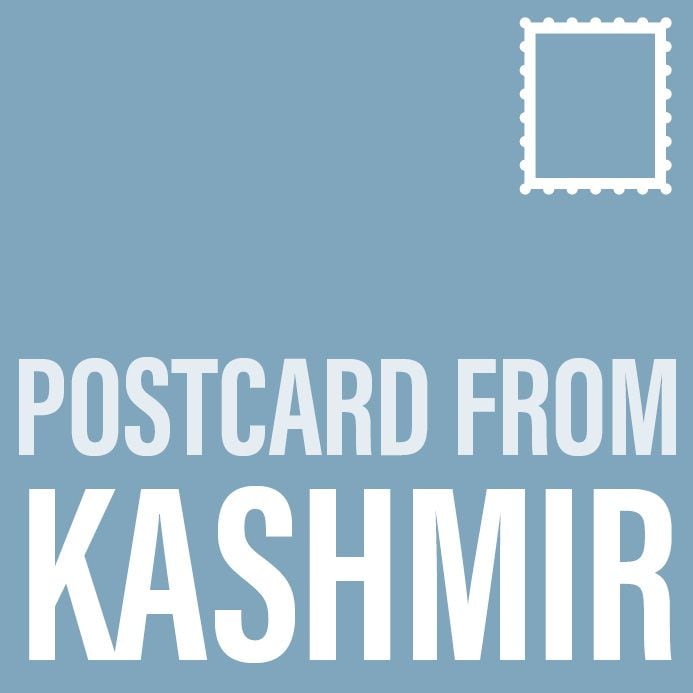
With the onset of winter, visitors from across the country and abroad flock to India's Kashmir region to enjoy the snow that blankets the picturesque mountainous region.
Nestled in the Himalayas, Kashmir Valley is otherwise known for its alpine meadows, gleaming lakes, coniferous trees and snow-capped mountain peaks.
As the temperature starts to dip towards minus 20ºC, the mountains become covered by snow while its lakes and waterfalls are frozen by December.
But not this winter.
Gulmarg, usually packed with skiers and snowboarders at this time of the year, is devoid of snow and tourists.
The fifth-highest ski resort in Asia, sitting at 2,650 metres above sea level, Gulmarg typically receives more than a metre of snow beginning in November. However, this year, it has received only about 15 centimetres.
The situation is the same at Sonmarg and Pahalgham, alpine meadows that are typically shrouded in several feet of snow.
The lack of snow has shocked local residents, farmers, hoteliers, tourist guides and climatologists.

Tourism is a mainstay in Kashmir, particularly during winter when tens of thousands of tourists flock to the region from the Indian plains to experience the winter season.
“As compared to the previous year when we had 100 per cent occupancy from December to March, this year we are facing cancellations,” said Wasim Ahmed Gannie, manager of the Kolahoi Green Heights hotel in Gulmarg.
“Skiers would stay for a month, but they are cancelling after a day. Our occupancy has reduced to 40 per cent. This is our peak season,” he told The National.
Tourists are equally upset.
“I was expecting to see lots of snow and take some photos and make memories, but I am quite disappointed,” said Kain Shah, an Australian tourist.
“I travelled all this distance to get here, expecting a nice holiday with my family but, rather, I was met with this scene.”

Climate change
Like other Himalayan regions that are facing the brunt of climate change, the valley too is experiencing freak and extreme weather patterns.
Kashmir was wrecked by heavy rainfall in May last year – the wettest in a decade – that also brought the mercury down to freezing levels.
In the second half of the year, it faced a rain deficit and recorded its second-hottest day in September in 132 years when the temperature rose to 34.2ºC – six degrees above normal.

After experiencing unusual weather throughout the year, there were hopes that Kashmir would at least enjoy a regular winter. However, it has received only 30 per cent of its average snowfall so far.
Even the 40-day period known as Chillai Kalan – the harshest time of winter beginning in mid-December, when the temperature drops to below freezing point and chances of snowfall are highest – was not as expected.
“This is unprecedented. Half of Chillai Kalan has passed but still not a single drop of rain or snow has poured down from the heavens. It can be linked to climate change. There has been a 20 per cent to 30 per cent shortage in precipitation,” said Suhaib Bandh, professor of environment science at Sri Pratap College in Srinagar.
Prof Shakil Romshoo, a geoscientist in Kashmir, said the prevailing dry spell was due to weak a western disturbance – a weather system that emanates from the Atlantic Ocean and the Mediterranean Sea and brings moisture-rich clouds laden with rains to the subcontinent's plains and snow to its hills.
“The weather in Kashmir is directly influenced by the global weather circulation patterns,” Mr Romshoo told The National. “The region has recently witnessed increasing frequency of extreme weather events such as floods and long dry spells driven by climate change.”
The scant snowfall also means that glaciers and rivers will be affected.
Kashmir's has abundant glaciers that are the main sources of water for rivers such as the Jhelum. The river is the lifeline of the valley but with glaciers retreating, its levels are dipping.
“The less snowfall, together with the increasing frequency and severity of heatwaves in the South Asian region during the last few years, has led to enhanced melting of glaciers in the Kashmir and rest of the Himalayas, putting food, water and energy security at risk,” Mr Romshoo said.

Affecting agriculture
The unusual weather patterns are severely harming Kashmir’s agrarian economy, on which about 70 per cent of the population depends on, directly or indirectly.
The region's production of saffron, nuts, apples, maize and rice all requires water from snowfall and rainfall.
Abdul Majeed, who grows saffron on about 4,000 square metres of land in Pampore, is worried about his harvest if the dry spell continues.
“There is no moisture and the buds are drying up before time,” said Mr Majeed, who also has an apple orchard.
“We need snow for moisture and germination. Similarly, buds have started appearing in apple trees, which usually comes in March to April.
“If we receive delayed snow and rains, the buds will fall off. We are staring at huge losses,” he said.












